- Luật
- Hỏi đáp
- Văn bản pháp luật
- Luật Giao Thông Đường Bộ
- Luật Hôn Nhân gia đình
- Luật Hành Chính,khiếu nại tố cáo
- Luật xây dựng
- Luật đất đai,bất động sản
- Luật lao động
- Luật kinh doanh đầu tư
- Luật thương mại
- Luật thuế
- Luật thi hành án
- Luật tố tụng dân sự
- Luật dân sự
- Luật thừa kế
- Luật hình sự
- Văn bản toà án Nghị quyết,án lệ
- Luật chứng khoán
- Video
- NGHIÊN CỨU PHÁP LUẬT
- ĐẦU TƯ CHỨNG KHOÁN
- BIẾN ĐỔI KHÍ HẬU
- Bình luận khoa học hình sự
- Dịch vụ pháp lý
- Tin tức và sự kiện
- Thư giãn

TIN TỨC
fanpage
Thống kê truy cập
- Online: 223
- Hôm nay: 198
- Tháng: 1621
- Tổng truy cập: 5245625
The Human Cost Of Moving Away From Fossil Fuels
The conversation about climate change needs to shift from simply reducing carbon emissions to ensuring that developing nations can take part in a diversified green economy.

Wallen Diaz for Noema Magazine
Millions of workers from developing countries have left their homes to work in the Gulf states, sending back money to support their families and communities. And every major decline in the price of oil comes with massive disruptions to those workers’ lives and the economies of their home countries.
In the months after the COVID-19 pandemic began, nearly 400,000 workers from the Indian state of Kerala returned home, The Washington Post reported. Some families had been sustained by remittances for multiple generations, and the ripple effects from the loss of that money have dealt a blow to the local economy.
Disruptions to the economies of the Gulf and their neighbors have become more frequent, with three major declines in the price of petroleum since the global financial crisis of 2008. And the brunt of the pain has fallen on the most vulnerable: the migrant workers who form the backbone of these economies, from places ranging from Cairo to Manila.
Decarbonizing the global economy is the only way forward for the survival of the human race. But decarbonization also poses great risks: a long-term, steady decline in the price of fossil fuels could turn the thriving cities of the Arab Gulf into ghost towns, triggering social unrest and economic depression in these states and the countries that depend on remittances.
To prevent that future, the conversation about climate change mitigation needs to shift from simply reducing carbon emissions to ensuring that developing nations can take part in a diversified green economy. We cannot expect decarbonization to take place at the pace that is needed by eliminating the livelihoods and incomes of the majority of the global economy without having a plan of action in place.
But even the most progressive comprehensive policy agendas on the table show little consideration for how to achieve rapid decarbonization in the Global South without destabilizing its economy. Most are overwhelmingly focused on a green reindustrialization of the economies of the Global North. The Green New Deal resolution in the United States, for instance, would offset the economic impact of decarbonization with a green industrial policy to create good manufacturing jobs, as well as a jobs guarantee with the federal government as the employer of last resort. A similar deal has been proposed for the European Union, and the Paris agreement and the consequent COP summits have focused primarily on national commitments to reduce carbon emissions, with voluntary development of national strategies to achieve this.
While all these efforts and national commitments are a big improvement over conversations around addressing climate change a decade ago, the continued (mostly) national focus is not sufficient for generating decarbonization at the speed required to limit the rise in global temperatures to 2 degrees Celsius.
Many national growth strategies, especially in countries of the Global South, are likely to have a hard time suddenly pivoting to a carbon-neutral approach without slamming the brakes on development, poverty reduction and improvements in welfare, unless there is a massive coordinated investment program to prevent it. Decarbonization in developing countries is also important since much of recent decarbonization achieved in the Global North has depended on “exporting” the dirtiest jobs to developing countries, then simply importing the finished products.
And crucially, the success of global decarbonization hinges on at the very least a regional, if not global, program of green reindustrialization of fossil fuel economies — and the economic ecosystems they support.
Many of the largest economies in the Middle East and North Africa have historically been dependent on the extraction and sale of fossil fuels for their government revenue. Saudi Arabia, the United Arab Emirates, Bahrain, Qatar and Kuwait are important sources of remittance income for migrants from Africa, South Asia and Southeast Asia.
These oil rich economies continue to be an important engine of economic growth for many countries of the Global South, despite being known for their poor working conditions and violations of human rights. Therefore, any structural shift in the business model of these countries due to the energy transition has deep and significant ramifications for growth and development in many economies.
What Green Industrialization In the Greater Middle East Could Look Like
Arguments can be made that the hydrocarbon producers based on the Arabian Peninsula are the most efficient and low-cost in the world, and those industries are so central to their domestic and regional economy that they should be allowed to continue as legacy producers for longer than others. Still, as renewables and other energy-efficient solutions are gradually adapted, these economies will inevitably decline.
One solution to offset this decline is to foster increased economic, financial and social integration from Dakar to Dhaka. In many ways, the Arab Gulf states already serve as the regional transportation and financial hub for Africa, South Asia, Central Asia and the Middle East. Decades of wars and political turmoil have led business from across these regions to relocate in the Persian Gulf city states. This in combination with massive investments by countries like the UAE, Qatar and, lately, Saudi Arabia in infrastructure and transportation links have made these cities natural hubs.
The natural next step is to use these advantages to construct a green regional economy. Several proposals have been made in recent years that promise to unite the Greater Middle East, including East Africa and South Asia. The following three solutions are just first steps, building off ideas from these earlier proposals, even if their feasibility remains in question.
Hydrogen Cities
The idea of creating a green city called Neom in northwest Arabia was proposed by the Saudi government in 2017 as part of an ambitious slate of reforms announced by the Crown Prince Mohammed bin Salman. The plans expressed in the Kingdom’s Vision 2030 plan call for this region to become a free-trade zone focused on tourism and industrial production. Where things get truly futuristic is the energy source that the city’s planners hope will power this development.
The core of Neom is something that the Saudis have named the Line, which is to be a city powered by hydrogen. It is supposed to be the first development within Neom, a smart city without cars, which the Saudi government says will add at least $48 billion to its annual GDP. The project is also expected to include what they say will be the world’s largest green hydrogen project, positioned above the Red Sea. Building on the theme of global reach, Neom’s website states that at least 40% of the world population should be able to reach the city within a four hour flight.
Millions of workers from developing countries have left their homes to work in the Gulf states, sending back money to support their families and communities. And every major decline in the price of oil comes with massive disruptions to those workers’ lives and the economies of their home countries.
In the months after the COVID-19 pandemic began, nearly 400,000 workers from the Indian state of Kerala returned home, The Washington Post reported. Some families had been sustained by remittances for multiple generations, and the ripple effects from the loss of that money have dealt a blow to the local economy.
Disruptions to the economies of the Gulf and their neighbors have become more frequent, with three major declines in the price of petroleum since the global financial crisis of 2008. And the brunt of the pain has fallen on the most vulnerable: the migrant workers who form the backbone of these economies, from places ranging from Cairo to Manila.
Decarbonizing the global economy is the only way forward for the survival of the human race. But decarbonization also poses great risks: a long-term, steady decline in the price of fossil fuels could turn the thriving cities of the Arab Gulf into ghost towns, triggering social unrest and economic depression in these states and the countries that depend on remittances.
To prevent that future, the conversation about climate change mitigation needs to shift from simply reducing carbon emissions to ensuring that developing nations can take part in a diversified green economy. We cannot expect decarbonization to take place at the pace that is needed by eliminating the livelihoods and incomes of the majority of the global economy without having a plan of action in place.
But even the most progressive comprehensive policy agendas on the table show little consideration for how to achieve rapid decarbonization in the Global South without destabilizing its economy. Most are overwhelmingly focused on a green reindustrialization of the economies of the Global North. The Green New Deal resolution in the United States, for instance, would offset the economic impact of decarbonization with a green industrial policy to create good manufacturing jobs, as well as a jobs guarantee with the federal government as the employer of last resort. A similar deal has been proposed for the European Union, and the Paris agreement and the consequent COP summits have focused primarily on national commitments to reduce carbon emissions, with voluntary development of national strategies to achieve this.
While all these efforts and national commitments are a big improvement over conversations around addressing climate change a decade ago, the continued (mostly) national focus is not sufficient for generating decarbonization at the speed required to limit the rise in global temperatures to 2 degrees Celsius.
Many national growth strategies, especially in countries of the Global South, are likely to have a hard time suddenly pivoting to a carbon-neutral approach without slamming the brakes on development, poverty reduction and improvements in welfare, unless there is a massive coordinated investment program to prevent it. Decarbonization in developing countries is also important since much of recent decarbonization achieved in the Global North has depended on “exporting” the dirtiest jobs to developing countries, then simply importing the finished products.
And crucially, the success of global decarbonization hinges on at the very least a regional, if not global, program of green reindustrialization of fossil fuel economies — and the economic ecosystems they support.
Many of the largest economies in the Middle East and North Africa have historically been dependent on the extraction and sale of fossil fuels for their government revenue. Saudi Arabia, the United Arab Emirates, Bahrain, Qatar and Kuwait are important sources of remittance income for migrants from Africa, South Asia and Southeast Asia.
These oil rich economies continue to be an important engine of economic growth for many countries of the Global South, despite being known for their poor working conditions and violations of human rights. Therefore, any structural shift in the business model of these countries due to the energy transition has deep and significant ramifications for growth and development in many economies.
What Green Industrialization In the Greater Middle East Could Look Like
Arguments can be made that the hydrocarbon producers based on the Arabian Peninsula are the most efficient and low-cost in the world, and those industries are so central to their domestic and regional economy that they should be allowed to continue as legacy producers for longer than others. Still, as renewables and other energy-efficient solutions are gradually adapted, these economies will inevitably decline.
One solution to offset this decline is to foster increased economic, financial and social integration from Dakar to Dhaka. In many ways, the Arab Gulf states already serve as the regional transportation and financial hub for Africa, South Asia, Central Asia and the Middle East. Decades of wars and political turmoil have led business from across these regions to relocate in the Persian Gulf city states. This in combination with massive investments by countries like the UAE, Qatar and, lately, Saudi Arabia in infrastructure and transportation links have made these cities natural hubs.
The natural next step is to use these advantages to construct a green regional economy. Several proposals have been made in recent years that promise to unite the Greater Middle East, including East Africa and South Asia. The following three solutions are just first steps, building off ideas from these earlier proposals, even if their feasibility remains in question.
Hydrogen Cities
The idea of creating a green city called Neom in northwest Arabia was proposed by the Saudi government in 2017 as part of an ambitious slate of reforms announced by the Crown Prince Mohammed bin Salman. The plans expressed in the Kingdom’s Vision 2030 plan call for this region to become a free-trade zone focused on tourism and industrial production. Where things get truly futuristic is the energy source that the city’s planners hope will power this development.
The core of Neom is something that the Saudis have named the Line, which is to be a city powered by hydrogen. It is supposed to be the first development within Neom, a smart city without cars, which the Saudi government says will add at least $48 billion to its annual GDP. The project is also expected to include what they say will be the world’s largest green hydrogen project, positioned above the Red Sea. Building on the theme of global reach, Neom’s website states that at least 40% of the world population should be able to reach the city within a four hour flight.
BY DEVIKA DUTT AND ALDEN YOUNG
Các bài viết khác
- Vài nét Dự báo thời đại phục hưng và khai sáng của loài người sau đại dịch Corona-2019.7-2021(khởi đầu từ tháng 9 năm giáp thìn 2024) (25.06.2021)
- Từ sự kiện Tổng biên tập báo TIME Greta Thunberg là Nhân vật của năm 2019 đến báo cáo Biến đổi khí hậu Phúc trình của IPCC báo động đỏ cho nhân loại 82021 (15.01.2020)
- We Need To Talk About The Carbon Footprints Of The Rich (12.06.2022)
- Đức: Lệnh trừng phạt từ phương Tây sẽ làm Nga suy yếu năng lực quân sự (12.06.2022)
- Lạm phát toàn cầu có tín hiệu hạ nhiệt (12.06.2022)






















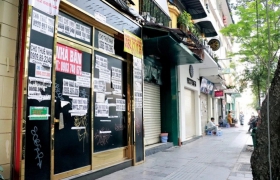


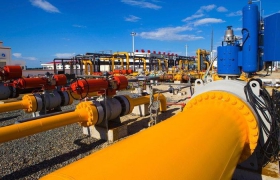





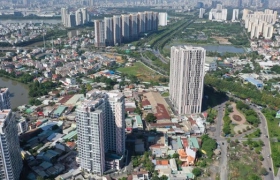


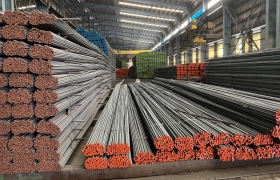









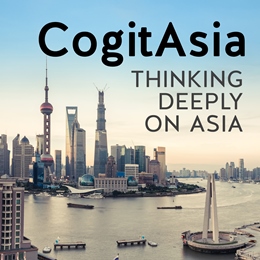





 Yahoo:
Yahoo: 